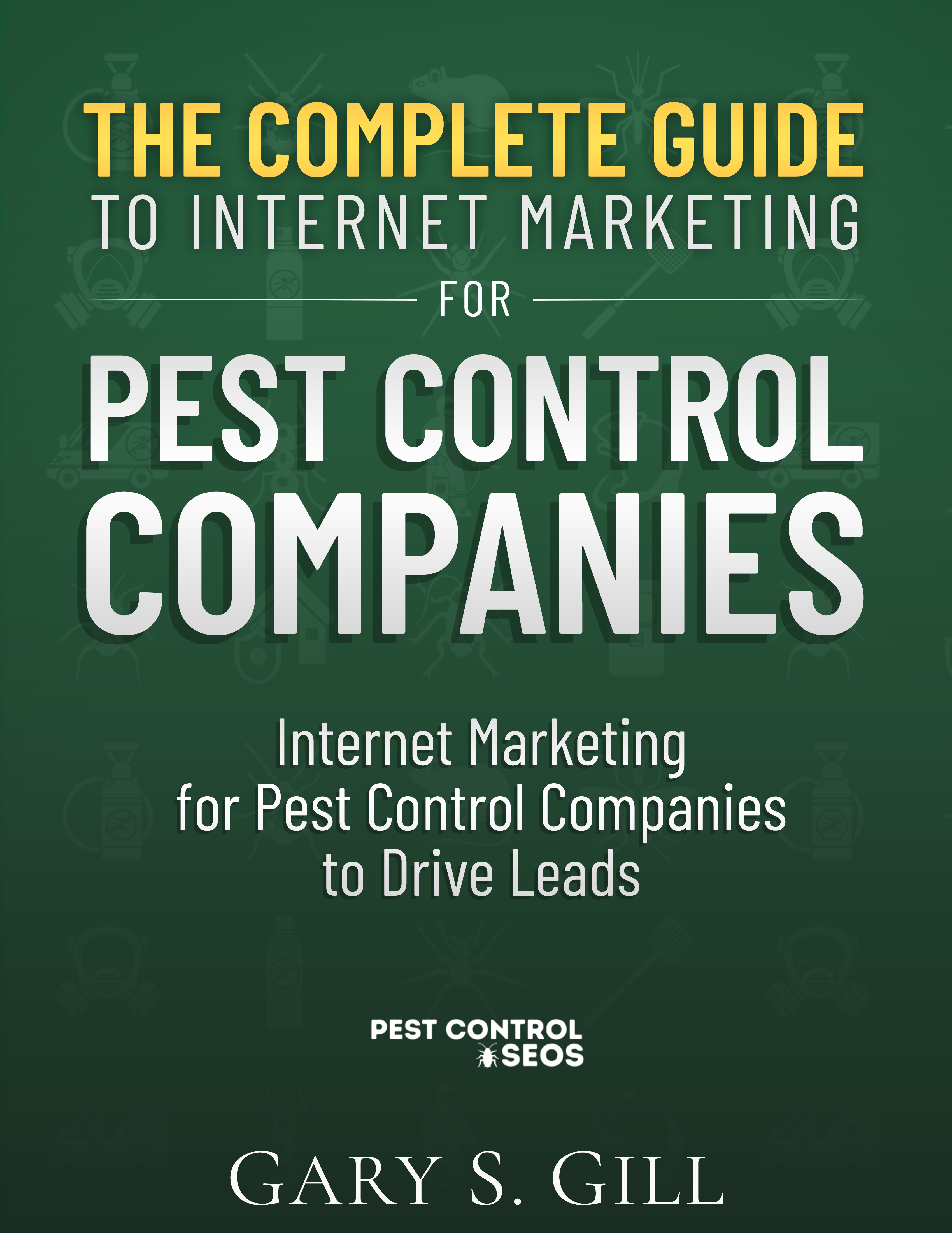A lot of the time, companies think a pest control website design should consist of endless blocks of text paired with a few stock photos, and that should be enough to bring the customers in. While it is definitely important to have a digital presence, it is just as important to make a good impression once your target market discovers you.
Even if you currently have a great pest control website design, it does not always follow that you get enough quality leads to garner more sales. Sometimes all it takes is a few minor tweaks to make a world of difference.
You can start off with our top 5 pest control web design tips to get your business more qualified leads below:
Before anything else, consider your target audience first. Think of how they would discover, receive, and engage with the content you offer them. The more that you provide an overall quality user experience, the higher your chances are of garnering quality leads.
A few factors that can positively impact this are:
One of the most important components of a successful pest control website design is its loading time. Studies show that websites that load between two to three seconds have the lowest recorded bounce rates, meaning their readers actually stay on to scroll through the rest of the content.
Other websites that took longer than the three-second mark saw a major drop in traffic, in fact, more than 40% of consumers do not wait beyond it. To ensure that your leads stay long enough to actually get to your content, you can help your pages load faster by doing the following:

Utilizing white space in your pest control website design makes it much easier for your readers to follow and process your content. It’s a neat and simple way to break up different sections of the page and ensure that each area gets enough attention.
Many companies think that filling up each web page from corner to corner is the better way to go when in fact, it is hurting your site’s readability. Keep it clean and easy to browse so that your website visitors will be more inclined to stay longer.
Having a simple navigational system can really go a long way in terms of helping your readers get to where they want to be. If they find it easy to look for specific information, they will most likely remain on your site and become valuable leads (if your content is helpful enough).
Using menus at the top of the page, bold headings with subcategories within the content, and more navigational features at the bottom of the page level up your user experience points.
Moreover, we also suggest doing the following:
There is an endless supply of new devices in today’s market, with a single user usually investing in more than one. Be it a mobile phone, tablet, laptop, smart TV, desktop, or other kinds of technology, it is important that your pest control website design is responsive enough to display well in all of them.
One of the best ways to increase leads is by being visible and readable on any screen your target market is currently using.
Contact forms are a win-win situation for both you and your potential customer. It is a way for them to be able to reach out to you, address concerns, and generally get more information. On your end, it is a way that you can collect their vital information that may be used (with consent) for marketing or lead-generating purposes.
One way to get their consent is by displaying a checkbox above the “submit contact form” button that confirms if they would like to receive news, promos, and other information.
While contact forms are a great way to have interested readers reach out, adding a live chat feature also amps up how positive your user’s experience on your website will be. Especially with modern expectations of instant gratification, clients highly value accessibility and accommodating service. Having a live chat feature can offer just that.
By directly interacting with them in real time, you get to build rapport and address many important concerns that could make or break their purchasing decision. Live chat also offers a more human experience, which your readers can better relate to and feel comfortable with enough to trust you.

Testimonials are a surefire way to garner more trust from website visitors. Did you know that over 92% of potential customers feel more confident about a product or service when they see it has been recommended by those who already purchased from or hired the company in the past?
Share others’ experiences with your business by adding a testimonial section to your pest control website design. You may also integrate Google reviews and other feedback-collection sites such as Yelp, Consumer Reports, and the like wherein customers flock to check reviews.
Garner more leads by instilling confidence, gaining trust, and maintaining that company-client relationship!
Must Read: HOW TO MAKE SURE YOUR PEST CONTROL WEBSITE IS SET UP TO CONVERT VISITORS
Call To Action (CTA) buttons are what help guide your readers to the next ideal step. To garner better leads, it is best not to leave them with too many options (or no options at all) when it comes to navigating your content.
Their purchasing decision process will be much easier and would most likely work in your favour if you gently guide them through it by means of CTA buttons.
There are three best practices you can follow in creating the most effective CT buttons, namely:
They work best when they can easily be seen. Let your CTA buttons pop out by designing them in bold colours that do not blend into the rest of your website, making sure they are big enough, and positioned with white space around them.
It is also best to place them above the fold; also known as the section your readers see when they land on your page without needing to scroll down.
You do not need to stick to the usual “Click here” or “Download” buttons, you can add a little more spice to it and make your readers excited about taking the next step. Some fun examples would be “Download Your Free Pest Control Guide” or “Kick Start Your Pest Free Life, Book Now!”
It may seem like a small detail, but choosing the right shape for your buttons can make them either more enticing or less eye-catching. You can test out different shapes and see which ones your audience responds to the most!
Get More Information: BE THE PEST CONTROL BUSINESS PEOPLE FIND!
No one wants to visit a website with a block of text from top to bottom, it can be overwhelming and tedious, eventually leading to a high bounce rate.
Visuals, just like white space, help break up chunks of text on the website and also improve how organized your pages are. They make it easier for your readers to process your information, and may even provide them with a better understanding of the topic at hand.
If your readers have an easier time browsing your site, the chances of them turning into quality leads get higher. Here are a few tips on adding visuals to your pest control website design:
Stock photos are a great way to add more visuals to your pest control website design without spending too much on production. However, there are many stock photos that look too inauthentic and can really hurt how your audience relates to your pest control business. Since they will be essentially welcoming you into their personal spaces, be it their homes or offices, it is best to utilize images that make you feel more real, human, and reachable.
Apart from using more “authentic” looking stock photos, it is also best to add a few of your own images such as those of your staff, your headquarters, and your works.
Videos can effectively boost engagement and keep your audience on your web pages for longer periods of time. A video also serves as a great tool to explain more complex topics that may be too long to describe in text form. It can be used to showcase different services, concepts, and overall information about your business.
Highlighting the results of certain studies, surveys, service effectiveness, or facts relating to pest control can be interesting for your audience. Infographics can serve as a fun and interesting way to visually showcase these. After all, many individuals find it easier to process information when they are presented in visual form.

Every piece of content you decide to include in your website has its own weight and value. Be it images or text, these take up time and headspace for your readers, so they better be well worth it in order to keep them scrolling through the rest.
Every placeholder text that may be irrelevant to your pest control services is reducing your chances of engaging your visitors and enticing them to book an appointment or learn more about you.
To ensure that you have strong, informative, and engaging content that adds value to each web page, here are a few key tips to write your content around:
Optimizing your website with SEO strategies allows for better keyword targeting, website ranking, organization, and overall visibility.
When we say informative, we do not mean “publish a research paper”. Keep your content concise, well-structured, and easy to understand. These are the factors that make it more engaging and exciting.
An important tip in making content more engaging is displaying it well. This includes white space, paragraph structure, font colours, and everything!
Keep track of how well (or poorly) your web pages are doing and test out different ways to improve your pest control website design. By seeing what factors make a difference in foot traffic and lead generation, you have a better understanding as to what your market wants.
Make sure to measure your results after every test and see which changes are improving your site’s performance!

